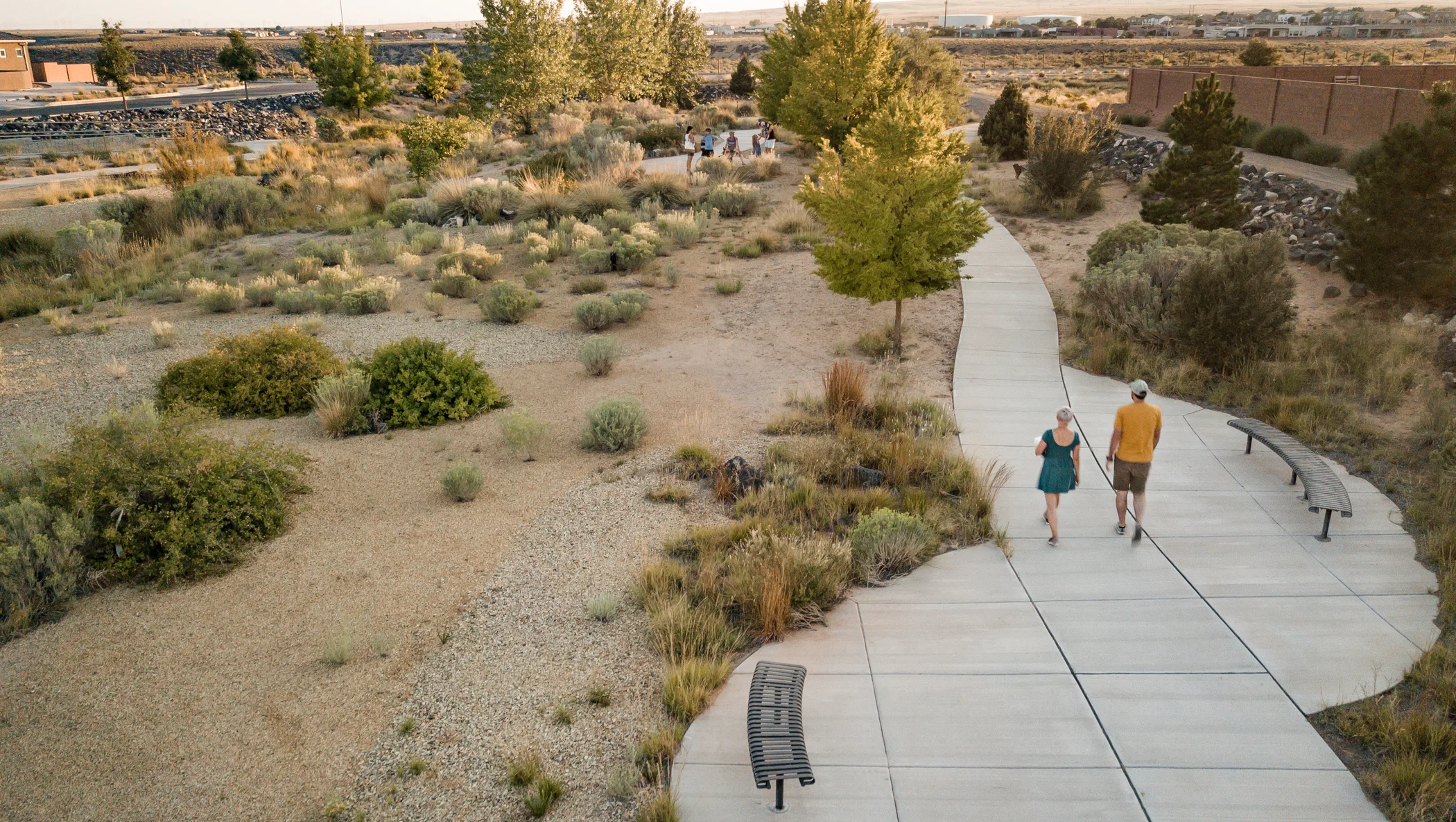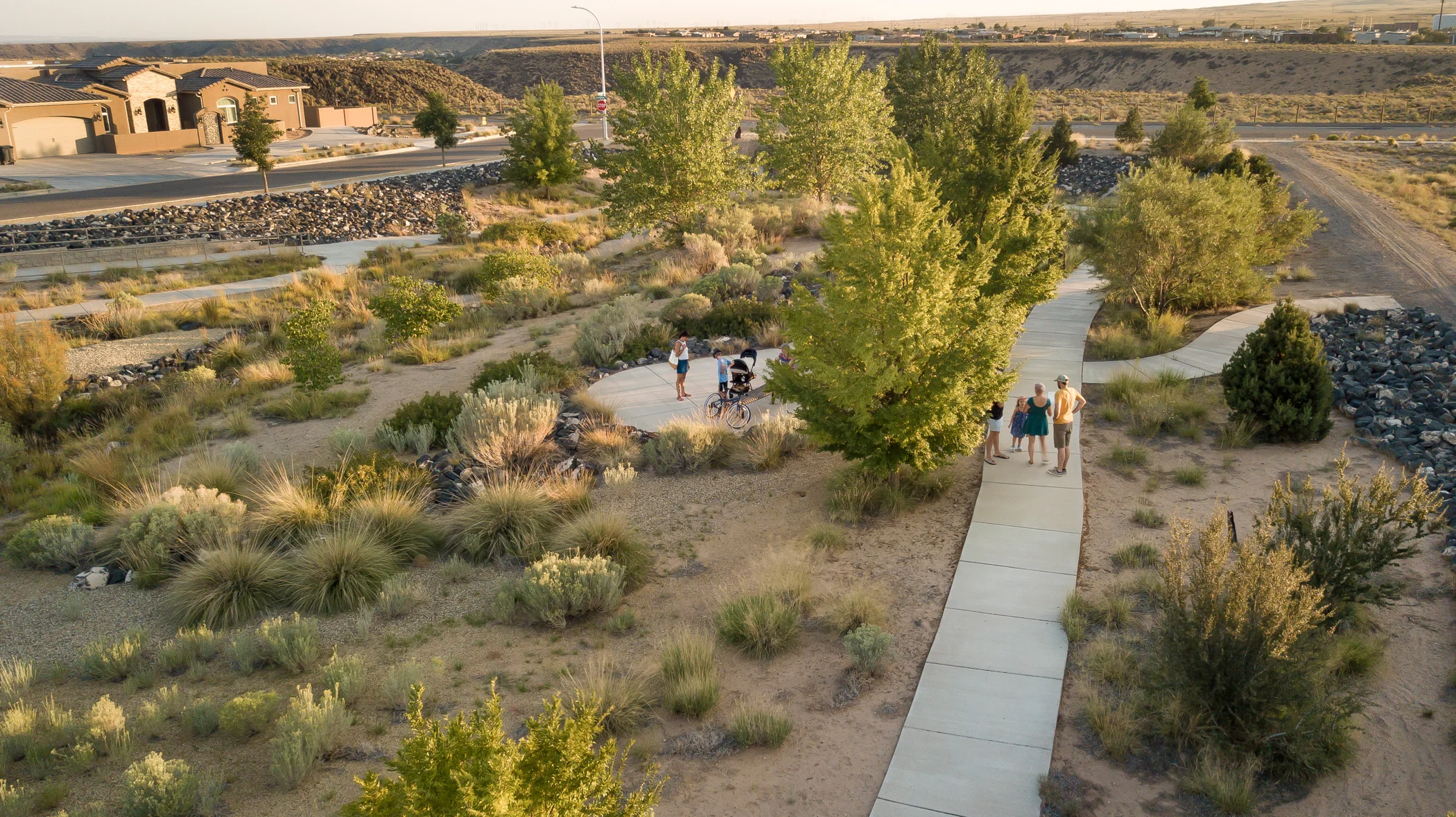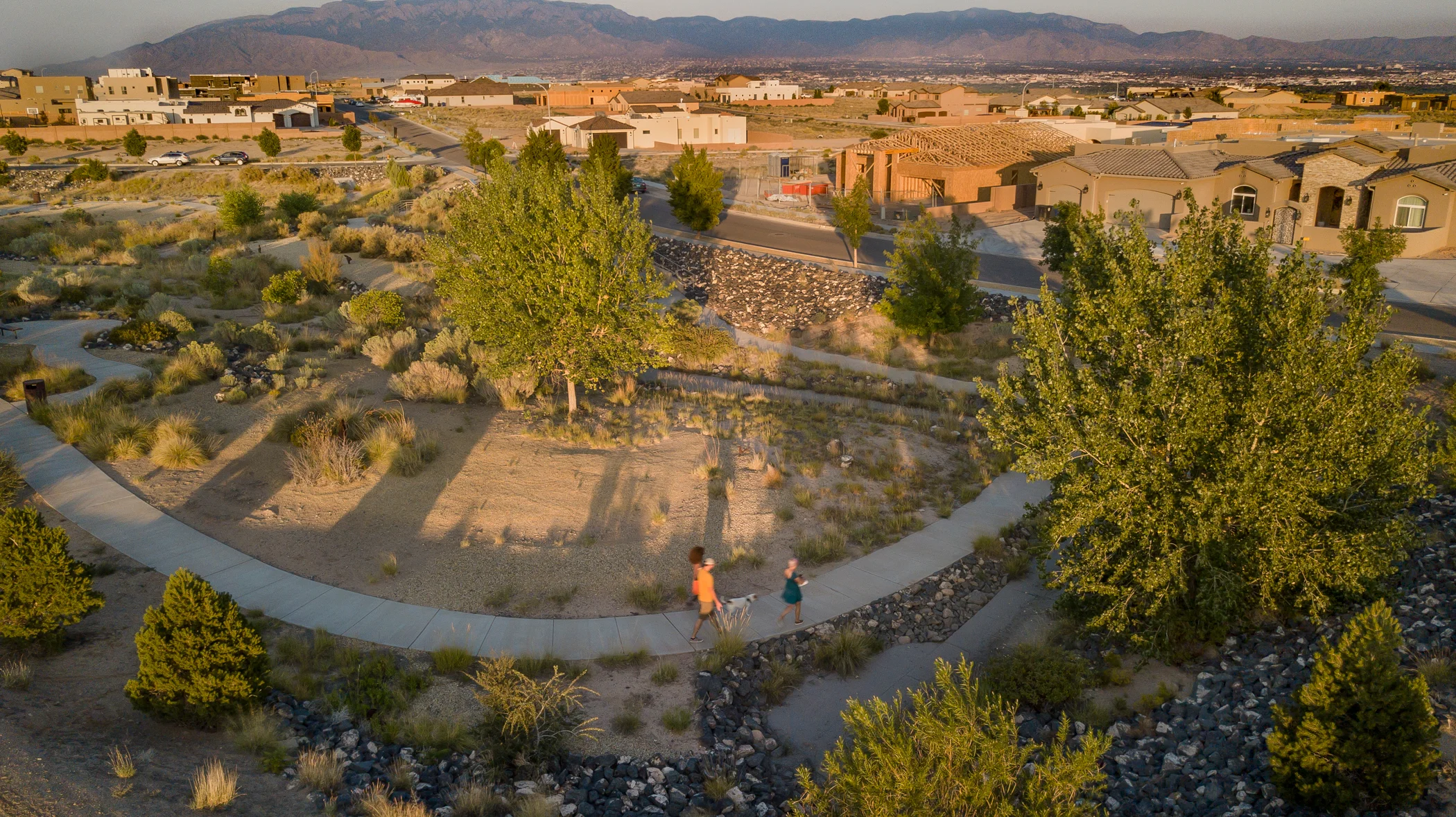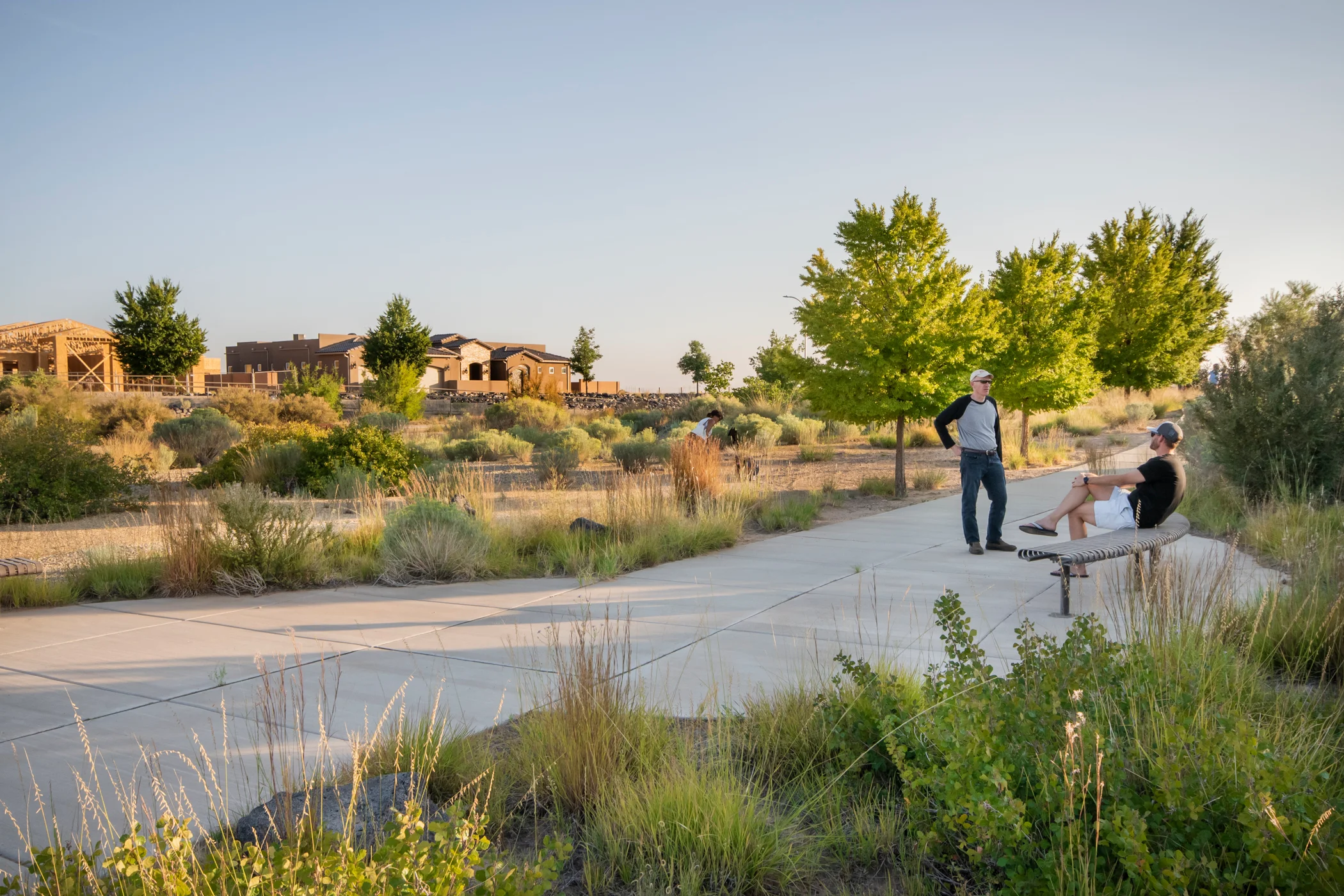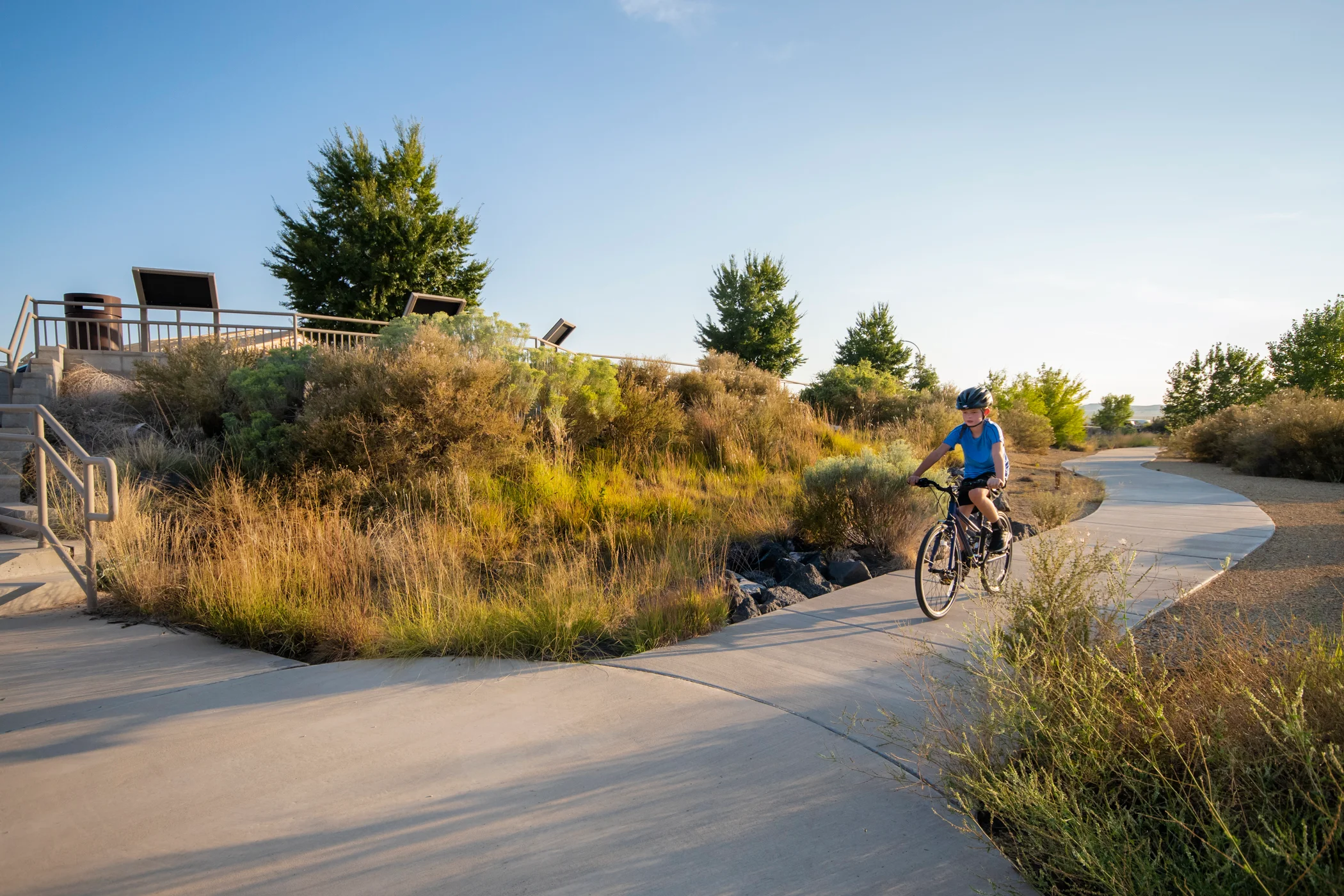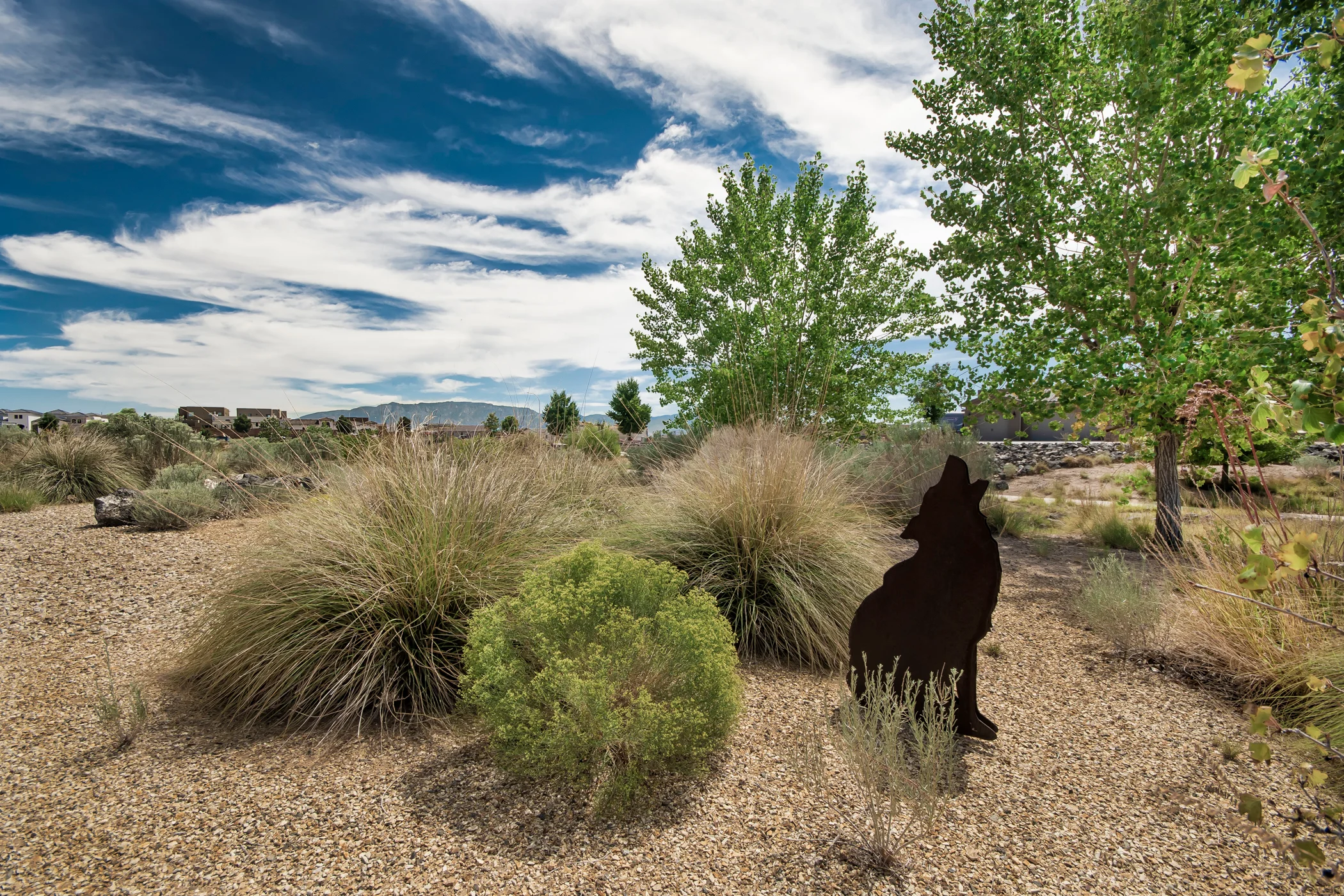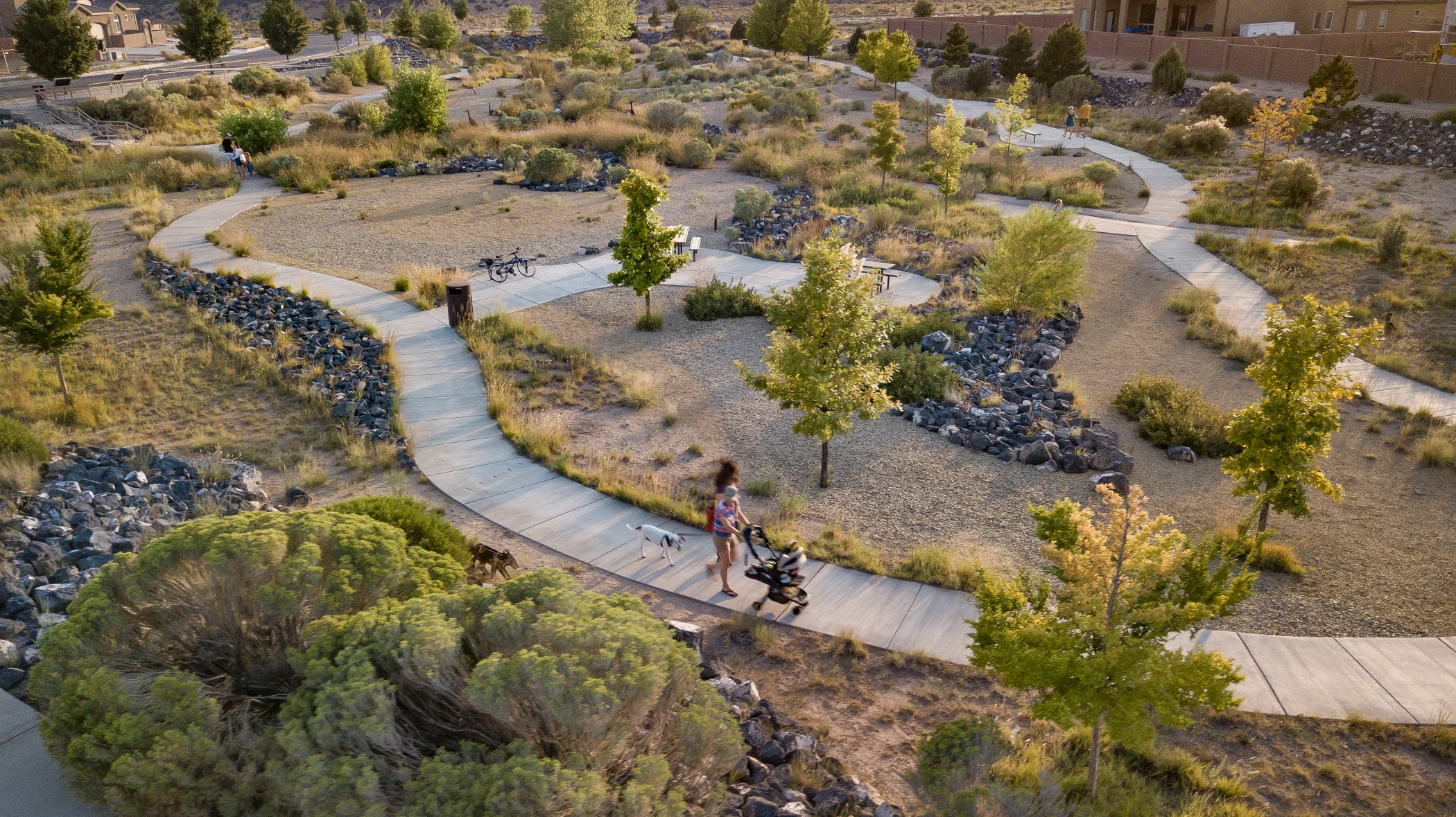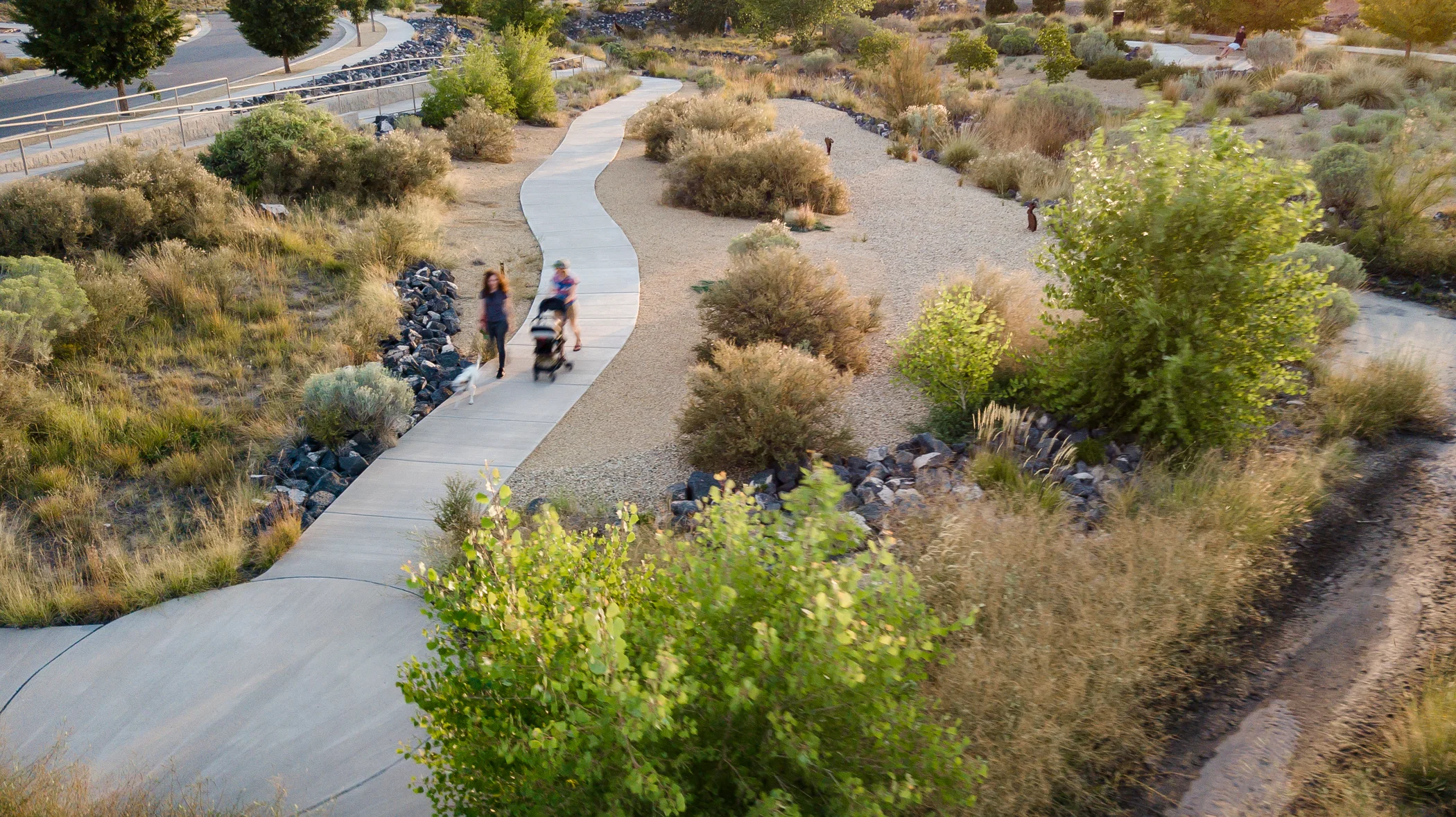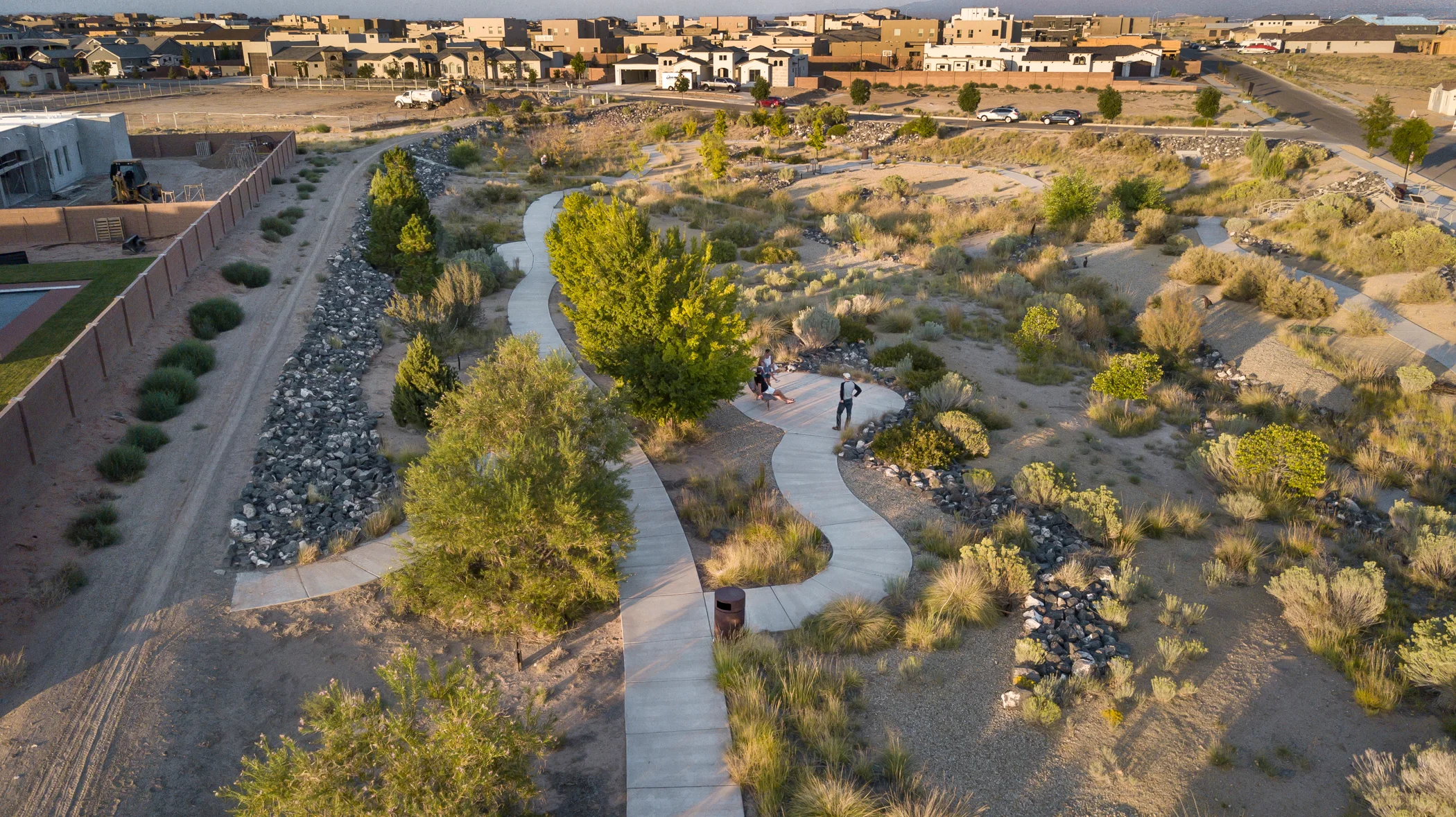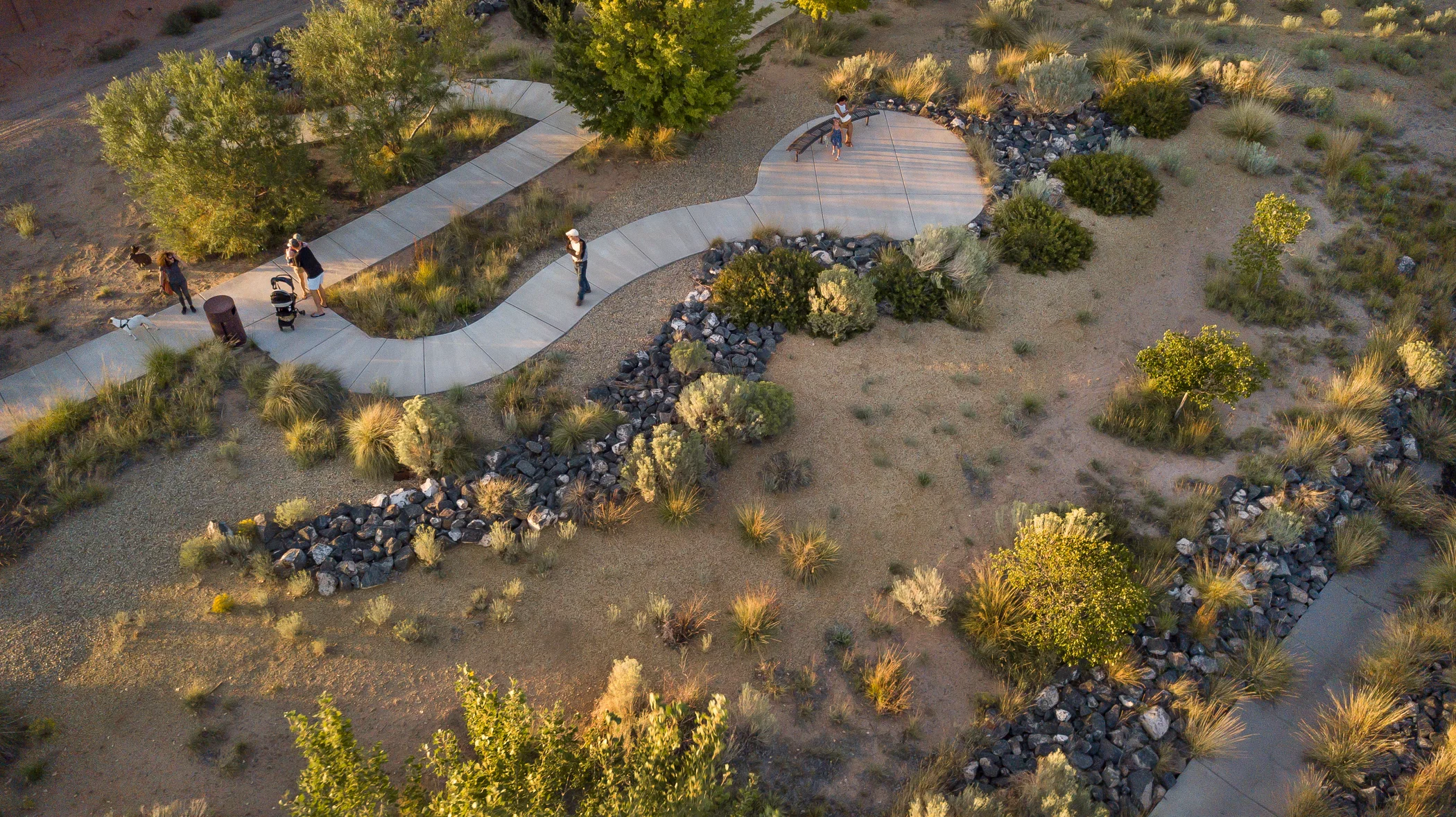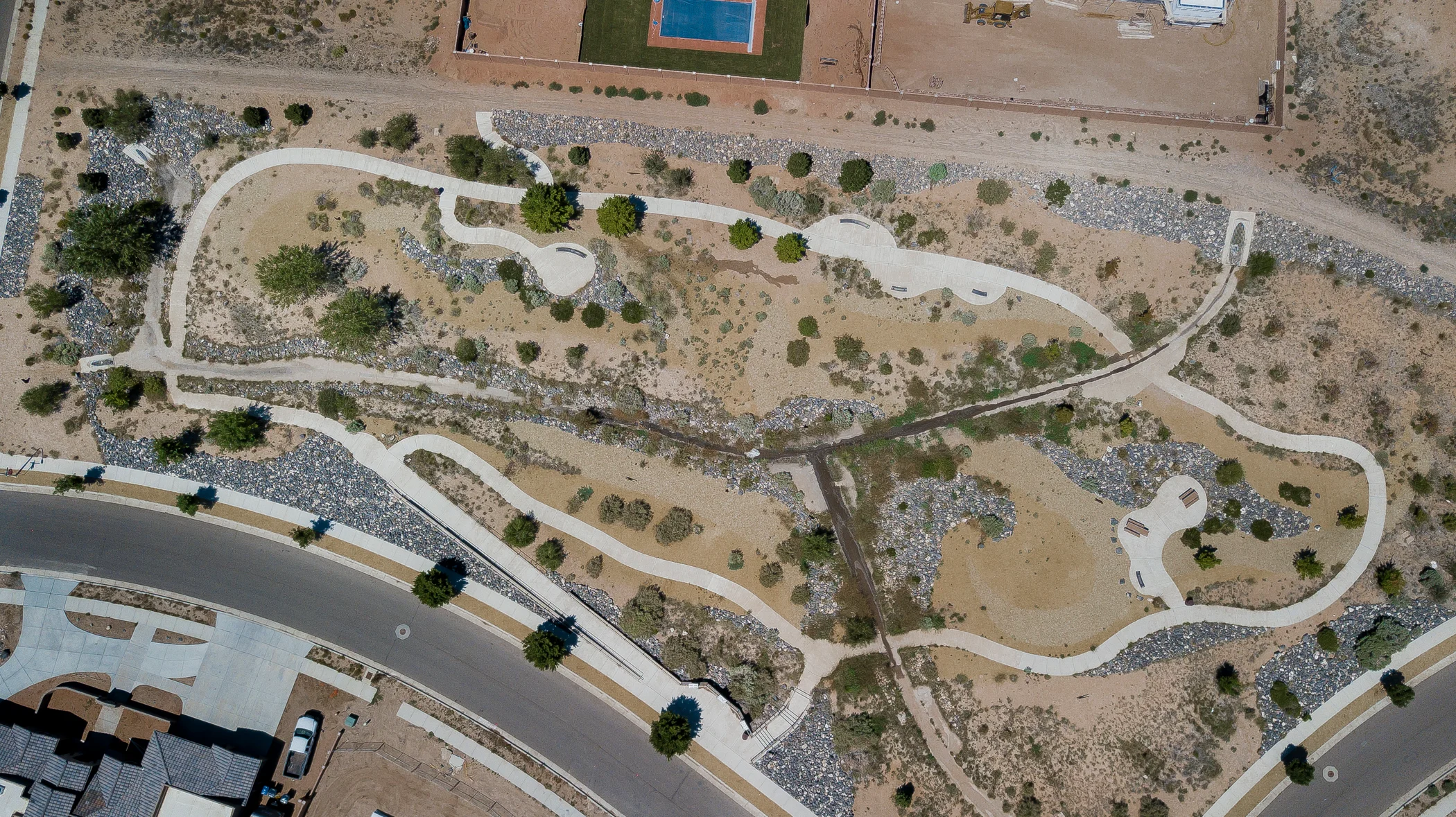The park has also reshaped the notion of what is required for maintenance. What was initially seen as a burden is now a welcome departure from the need to mow, fertilize, clean up leaf litter, repair irrigation, and restore play equipment. Water consumption is a fraction of that of a traditional park, and the plant communities continue to thrive and evolve.
Petroglyph Estates Park is a 2 acre neighborhood park on Albuquerque's West Mesa. Built in 2015, it has become an increasingly valuable community gathering place as the surrounding neighborhood continues to develop. Beyond its impact to the area residents, the park served as a model for a new approach to City park design that embraces the unique character of the surrounding natural environment.
The design blurs the boundary between parks and open space. Accessible paths wind their way through braided patterns that evoke the aesthetic of New Mexico's arroyos. Gathering spaces nestle into clusters of native vegetation. Improvised paths lead through natural basalt outcroppings and engage layered ecozones.
The park is adjacent to the Petroglyph National Monument, a protected site where visitors engage ancestral rock art made centuries ago by indigenous people. This proximity was the inspiration for including modern wildlife glyphs that didn't appropriate sacred cultural icons. Steel animal silhouettes encourage children to explore the site and immerse themselves in discovery. Subtle natural associations (the stalking coyote is closing in on a rabbit) provide clues to find some of the more hidden locations.
The park has also reshaped the notion of what is required for maintenance. What was initially seen as a burden is now a welcome departure from the need to mow, fertilize, clean up leaf litter, repair irrigation, and restore play equipment. Water consumption is a fraction of that of a traditional park, and the plant communities continue to thrive and evolve.
The landscape architects and City initially hoped this project would become the proof-of-concept that would reshape the approach to the design and maintenance of public parks. It didn't just affirm the viability of this approach, it has inspired a fundamental shift in the City's park system.


